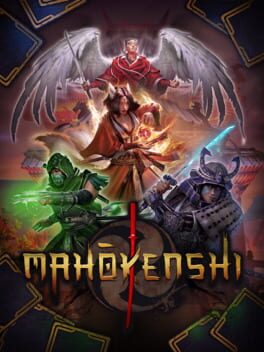The fundamentals of Mahōkenshi are great. Combining the Slay the Spire-esque roguelike deckbuilder with a tiled tactics board is a tall order, but this game nails it. Using energy for movement, adding landscape features that affect that movement, and giving each class access to different ways of subverting that movement economy through their card pool is brilliant. Giving enemies alert and chase radiuses so that they can guard treasures and give the player a choice between fighting, darting in and out, or avoiding the risk altogether is inspired. Bonus challenges recontextualize each mission and provide replay value even in the absence of a true procedural-generation mode. You could make an absolutely crackerjack game with this foundation.
Unfortunately, Mahōkenshi is just a fine game with that foundation. The balance is consistently, awkwardly off. Unlike the best Slay the Spire-alikes, synergy is not really the name of the game. A huge amount of the power of each class is just in the raw value of its best cards, so while the classes are themselves distinctive each one tends to converge on a single optimal play style rather than providing a buffet of options. And the upgrades you unlock for completing bonus challenges are so crushingly powerful that, if you get them all, the end of the game is just laughably easy.
As a design experiment, this game is fascinating. As a game to actually play, it's middling. As a bunch of French people's takes on what's most badass about Japanese mythology, it's pretty cringe. Make of that what you will.
Unfortunately, Mahōkenshi is just a fine game with that foundation. The balance is consistently, awkwardly off. Unlike the best Slay the Spire-alikes, synergy is not really the name of the game. A huge amount of the power of each class is just in the raw value of its best cards, so while the classes are themselves distinctive each one tends to converge on a single optimal play style rather than providing a buffet of options. And the upgrades you unlock for completing bonus challenges are so crushingly powerful that, if you get them all, the end of the game is just laughably easy.
As a design experiment, this game is fascinating. As a game to actually play, it's middling. As a bunch of French people's takes on what's most badass about Japanese mythology, it's pretty cringe. Make of that what you will.
